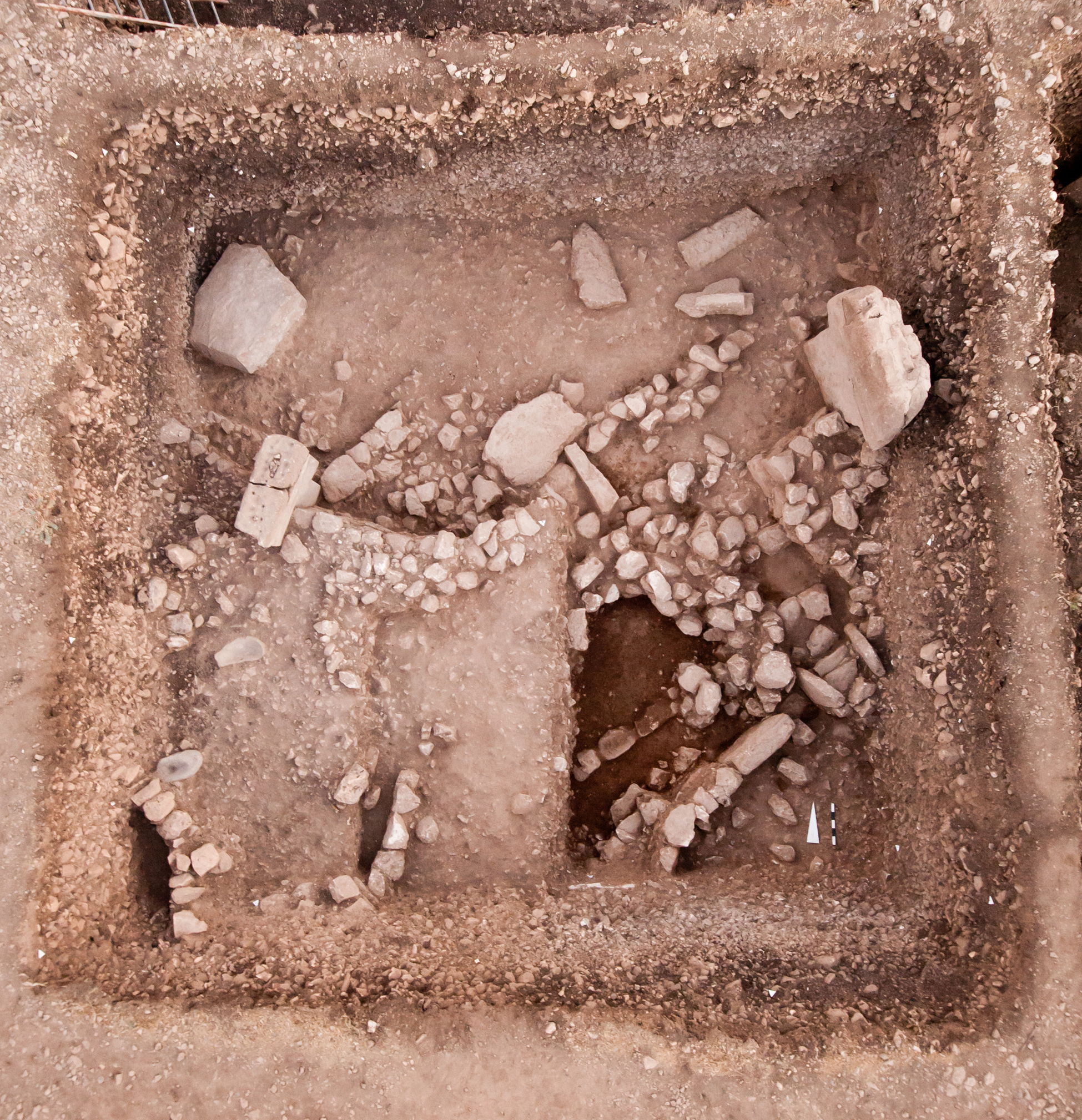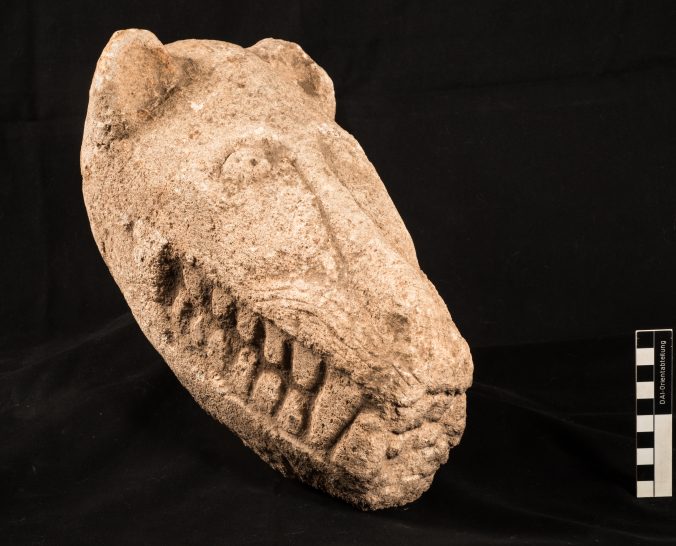Like in recent seasons, this year’s field work was as well particularly focussing on the preparations regarding upcoming construction work of two permanent shelters upon the excavation areas at Göbekli Tepe. One is to be constructed in the so-called main excavation area in the mound’s south-eastern depression with monumental enclosures A-D, the other will cover excavation areas in the north-western depression. Already since 2011 excavations were conducted in the latter, leading – among others – to the discovery of another early Neolithic circular enclosure (‘Enclosure H’, Fig. 1) with monumental T-pillars and another still not quite clearly addressable semi-circular structure with smaller and more narrow orthostat-like slabs.

Fig. 1: Southern part of Enclosure H in the northwestern depression of Göbekli Tepe (Photo: DAI, Nico Becker).
After finishing all necessary sondages for the main excavation area’s shelter construction in 2013, all of the corresponding deep-soundings for shelter-struts in the north-western areas could have been excavated to the bedrock in spring 2015 (Fig. 2). Next to their important function in the construction of a permanent protection of the unique architecture unearthed at Göbekli Tepe, these sundaes furthermore were contributing new scientific insight. In one of these soundings in areas K10-13 and K10-23 a number of several curvilinear walls and several terrazzo floors were discovered already in the autumn of 2014. Even if, due to the limited character of these sondages, it is still difficult to evaluate the complete extent of these features, it becomes clear that this is a larger, hitherto unknown complex which needs to be topic of future research to be comprehended completely.

Fig. 2: Excavation areas in the so-called north-western depression of Göbekli Tepe (Photos & Plan: DAI, Nico Becker).
This does also apply to another structure cut into the bedrock in area K10-55 which could have been excavated further as well in the course of this work. With a diameter of about 10 m and a depth of 2.8 m its function is still not completely clear as of yet, but again it is the backfill of this pit which is noteworthy: unlike the material dumped into the other known enclosure at Göbekli Tepe, basically consisting of fist-sized limestone rubble, animal bones, and flint artefacts, here large worked limestone objects and fragments of those (like T-pillars and so-called porthole stones) were stacked inside. The current state of excavation suggest a possible use as cistern to collect rain water maybe. Comparable yet much smaller pits were found on the adjacent rock plateaus as well and some rock-cut channels in the area support this interpretation. Again, further research will be necessary for a concluding evaluation.
In K10-05 excavation were concluded as well, reaching the natural bedrock 5 m below the contemporary surface where another channel with a depth of 50 cm could have been documented.
Among those finds produced in the course of the work period reported here, two limestone sculptures should be emphasised: there is one carefully and detailed worked sculpture of a predator (Fig. 3) coming from K10-88 which belongs to the already well-represented type of teeth-baring mammals (in this case a leopard most likely). The second object comes from K10-13/23 and is best described as anthropomorphic sculpture (Fig. 4). Initially found to be lacking the head, this could have been recovered in the course of excavations as well and was successfully matched. This find mirrors a number of similar stone heads with breaking edges in the neck area which are often found in the backfilling of Göbekli Tepe’s monumental enclosures, deposited next to T-pillars.

Fig. 3: Sculpture of a snarling predator, limestone (Photo: DAI, Nico Becker).

Fig. 4: Anthropomorphic sculpture; torso and head, limestone (Photo: DAI, Nico Becker).
Furthermore, about 100 samples for 14C-dating could have been collected and analysed due to financial support by the John Templeton Foundation in the frame of the “Our Place: Our Place in the World” sub-project. These data will finally allow a deeper understanding of the chronological relation of Göbekli Tepe’s monumental enclosures. The renewed discussion of the site’s complex stratigraphy therefore remained a main research focus of this field season and beyond.
Further reading:
Becker, N., Dietrich, O., Götzelt, Th., Köksal-Schmidt, C., Notroff, J., Schmidt, K. 2012. Materialien zur Deutung der zentralen Pfeilerpaare des Göbekli Tepe und weiterer Orte des obermesopotamischen Frühneolithikums, Zeitschrift für Orient-Archäologie 5: 14-43.
Clare, L., Dietrich, O., Notroff, J. 2015. Göbekli Tepe, Türkei. Die Arbeiten der Jahre 2014 (Herbst) und 2015, e-Forschungsberichte des Deutschen Archäologischen Instituts: 149-151 [read online – external link].

Leave a Reply